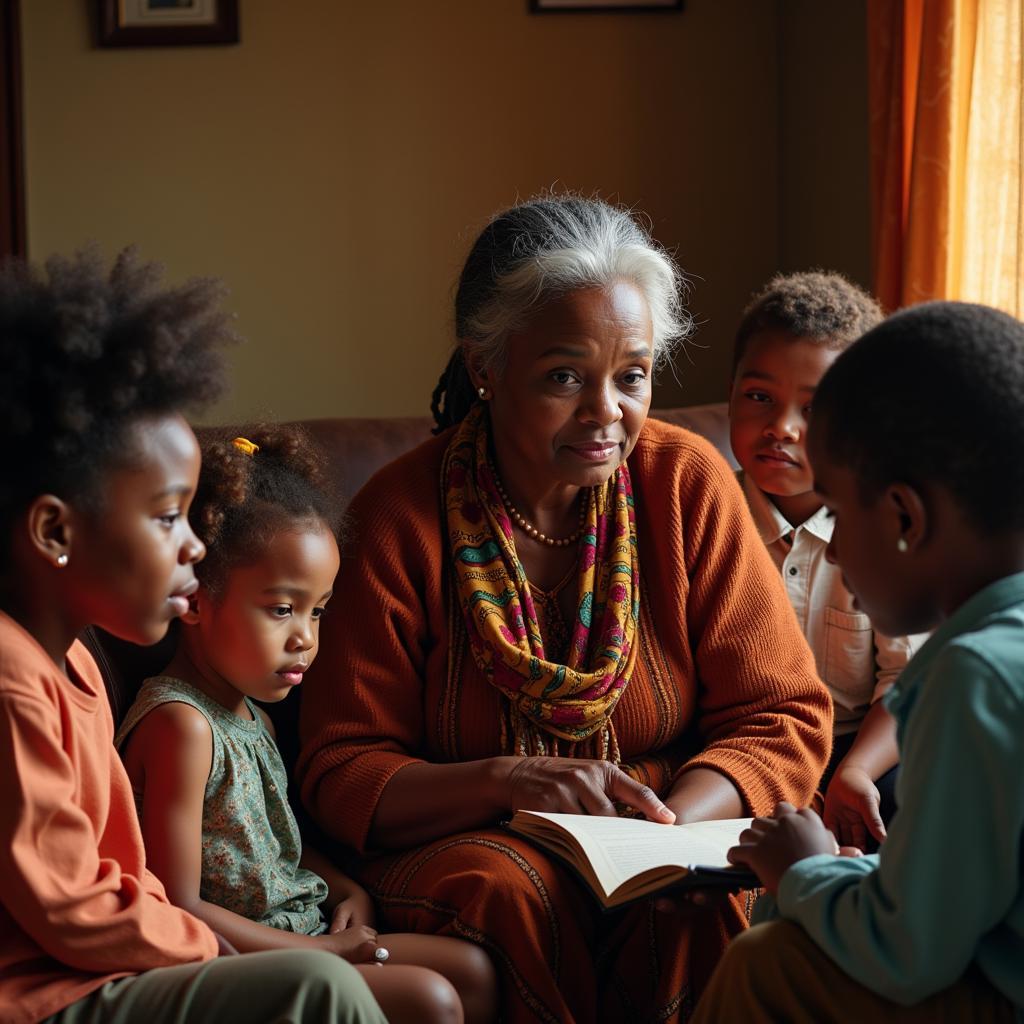Exploring African Art for Kids
African Art For Kids offers a vibrant and engaging way to learn about different cultures, histories, and artistic traditions. From colorful masks and intricate sculptures to rhythmic music and expressive dance, African art provides a rich tapestry of experiences for children to explore. This article will delve into various forms of African art suitable for kids, highlighting their significance and providing ideas for interactive learning.
Discovering the Wonders of African Masks
African masks, often used in ceremonies and rituals, are fascinating examples of artistic expression. They represent spirits, ancestors, or even abstract concepts, and their vibrant colors and intricate designs capture the imagination of children. Kids can learn about the different materials used in mask-making, such as wood, metal, and feathers, and explore the symbolic meanings behind various mask forms. Imagine creating your own masks inspired by African designs! This activity not only fosters creativity but also encourages kids to appreciate the cultural significance of these art forms. Learn more about African happy kids and their artistic endeavors. african happy kids
Many masks depict animals, embodying their strength and wisdom. Others represent important figures within the community, highlighting their roles and responsibilities. Exploring these stories helps children understand the social structures and belief systems of different African cultures.
Exploring African Sculptures and Pottery
African sculptures, carved from wood, stone, or bronze, showcase the skill and artistry of African artisans. From stylized human figures to abstract forms, sculptures often represent important values and beliefs. Children can learn about the different techniques used in sculpting and appreciate the unique aesthetic qualities of these art forms. Similarly, African pottery, with its diverse shapes and decorative patterns, offers another exciting avenue for exploration. Examining these art forms can spark curiosity about the daily lives and traditions of different African communities.
Did you know that some African sculptures are used in storytelling? Passed down through generations, these sculptures become tangible links to the past, preserving cultural heritage and transmitting important lessons.
The Rhythm and Soul of African Music and Dance
African music and dance are integral parts of cultural expression, often used in celebrations, rituals, and storytelling. The rhythmic beats of drums and the vibrant movements of dancers create a captivating experience for kids. Exploring African music and dance can introduce children to different musical instruments, rhythmic patterns, and dance styles. They can even learn some basic dance steps and try playing simple rhythms on a drum! This interactive approach helps kids develop a deeper appreciation for the cultural significance of music and dance in African societies. For examples of African arts and crafts specifically designed for kids, visit this link: african arts and crafts for kids
What Makes African Music Unique?
African music often features call-and-response patterns, where a lead singer or instrumentalist is answered by a chorus, creating a dynamic and interactive musical experience. This element makes it particularly engaging for children, encouraging participation and fostering a sense of community.
Dr. Anika Nkosi, a renowned ethnomusicologist specializing in African music, notes, “African music is more than just entertainment; it’s a powerful form of communication, expressing emotions, sharing stories, and connecting people to their heritage.”
Engaging with African Art for Kids: Practical Activities
How can we make learning about African art more engaging for kids?
- Create your own African-inspired artwork: Provide children with various materials like paint, clay, beads, and fabric scraps to create their own masks, sculptures, or patterned textiles.
- Storytelling with African folktales: Share captivating African folktales that incorporate elements of art and culture.
- Learn basic African dance steps: Introduce children to simple dance moves and rhythms from different African regions.
- Play African musical instruments: Encourage kids to experiment with drums, rattles, and other traditional instruments.
- Visit museums or cultural centers: Explore local museums or cultural centers that feature African art collections.
Conclusion
African art for kids provides a captivating journey into the rich cultural heritage of the African continent. From vibrant masks and sculptures to rhythmic music and expressive dance, exploring African art offers a unique opportunity for children to learn about different cultures, develop their creativity, and expand their understanding of the world. Remember to explore these resources on African art images for kids: african art images for kids. By engaging with African art in interactive and meaningful ways, we can foster a deeper appreciation for the beauty and diversity of human expression.
FAQ
- What are some common materials used in African art?
- How can I incorporate African art into my child’s education?
- Where can I find resources for learning about African art for kids?
- What are some famous examples of African art?
- How can I support African artists and artisans?
- What is the significance of color in African art?
- Are there any online resources for learning about African music and dance?
Further Questions
- How does African art reflect the environment and natural world?
- What are some of the challenges faced by African artists today?
- How has African art influenced contemporary art forms?
For further information, see african father talking to son.
Contact Us
When you need assistance, please contact us by phone: +255768904061, Email: kaka.mag@gmail.com Or visit our address: Mbarali DC Mawindi, Kangaga, Tanzania. We have a 24/7 customer service team.


